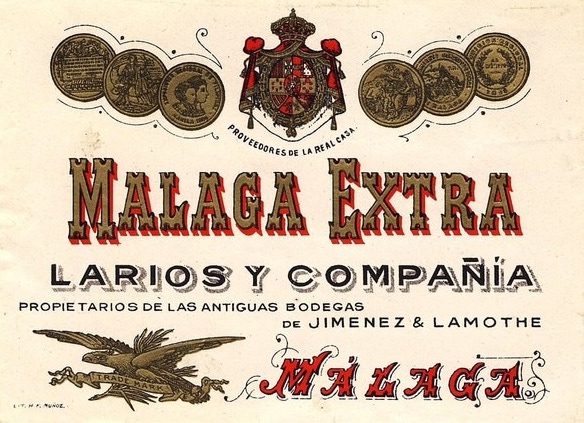Royal Warrant Of Appointment (Spain) on:
[Wikipedia]
[Google]
[Amazon]
Royal warrants of appointment () have been issued for centuries to those who supplied goods or services to the Monarch of Spain. The warrant enables the company to advertise the royal approval of distinction with the display of the royal

El Pais , Proveedores de la Real Casa
(09/03/1991) {{business-stub
coat of arms
A coat of arms is a heraldry, heraldic communication design, visual design on an escutcheon (heraldry), escutcheon (i.e., shield), surcoat, or tabard (the last two being outer garments), originating in Europe. The coat of arms on an escutcheon f ...
, thus lending prestige to the company.
The royal warrant of appointment
Royal warrants of appointment have been issued for centuries to tradespeople who supply goods or services to a royal court or certain royal personages. The royal warrant enables the supplier to advertise the fact that they supply to the issuer of t ...
is typically advertised on company hoardings, letter-heads and products by displaying the arms as appropriate. Underneath the emblem will usually appear the phrase "''Proveedor de la Real Casa''", which translates as "Purveyor of the Royal House".
History
The commercial distinction of Purveyor of the Royal House dates back to 1614, when such grant was first authorised. During Isabella II's reign, 83 titles were granted; 142 under the reign of her son Alfonso XII, 96 were extended during the regency of Queen Maria Christina and 66 during the reign of Alfonso XIII. The chosen establishments integrated a select list of purveyors throughout Spain that regularly sold its products to the royal house, considered always of high when not of splendid quality; perfumes, guns, rice or nougat, shoes, garments and even pianos. In return, merchants, including some foreigners, were allowed to use the Spanish Crown shield in correspondence, labeling and invoices, as well as in the exterior signs of their businesses. Inside those shops, some of them still decorated with prominent mahogany counters and gleaming showcases, a covetedparchment
Parchment is a writing material made from specially prepared Tanning (leather), untanned skins of animals—primarily sheep, calves and goats. It has been used as a writing medium in West Asia and Europe for more than two millennia. By AD 400 ...
60cm long and 40cm wide, written always in exquisite calligraphy and hung from the main wall; in it, the Head of the Royal Household testified that the owner of the commercial premises, "by order of the King", could be considered a Supplier of the Royal House, "for his intelligence and satisfaction." Some establishments still keep it, such as "Seseña", a supplier of Spanish cloaks in Madrid.

Royal warrant holders
Companies that have received the honour are Seseña, Loewe, Camisería Burgos, Sarasqueta, Vaquería del Republicano, Jimenez y Lamothe, Viena Capellanes, SOLÉNER (Soluciones Energéticas S.A.), Confiteria de Alfredo Reig, and many cigar companies such as H. Upmann. Foreign purveyors include Cartier SA,Charvet Place Vendôme
Charvet Place Vendôme (), commonly known as Charvet, is a French high-end shirt maker and tailor located at 28 Place Vendôme in Paris, France. The company designs, produces and sells bespoke and ready-to-wear shirts, neckties, blouses, pyjamas ...
, Jacob & Josef Kohn, and Steinway & Sons.
See also
*Royal warrant of appointment
Royal warrants of appointment have been issued for centuries to tradespeople who supply goods or services to a royal court or certain royal personages. The royal warrant enables the supplier to advertise the fact that they supply to the issuer of t ...
* Royal Household of Spain
External links
El Pais , Proveedores de la Real Casa
(09/03/1991) {{business-stub